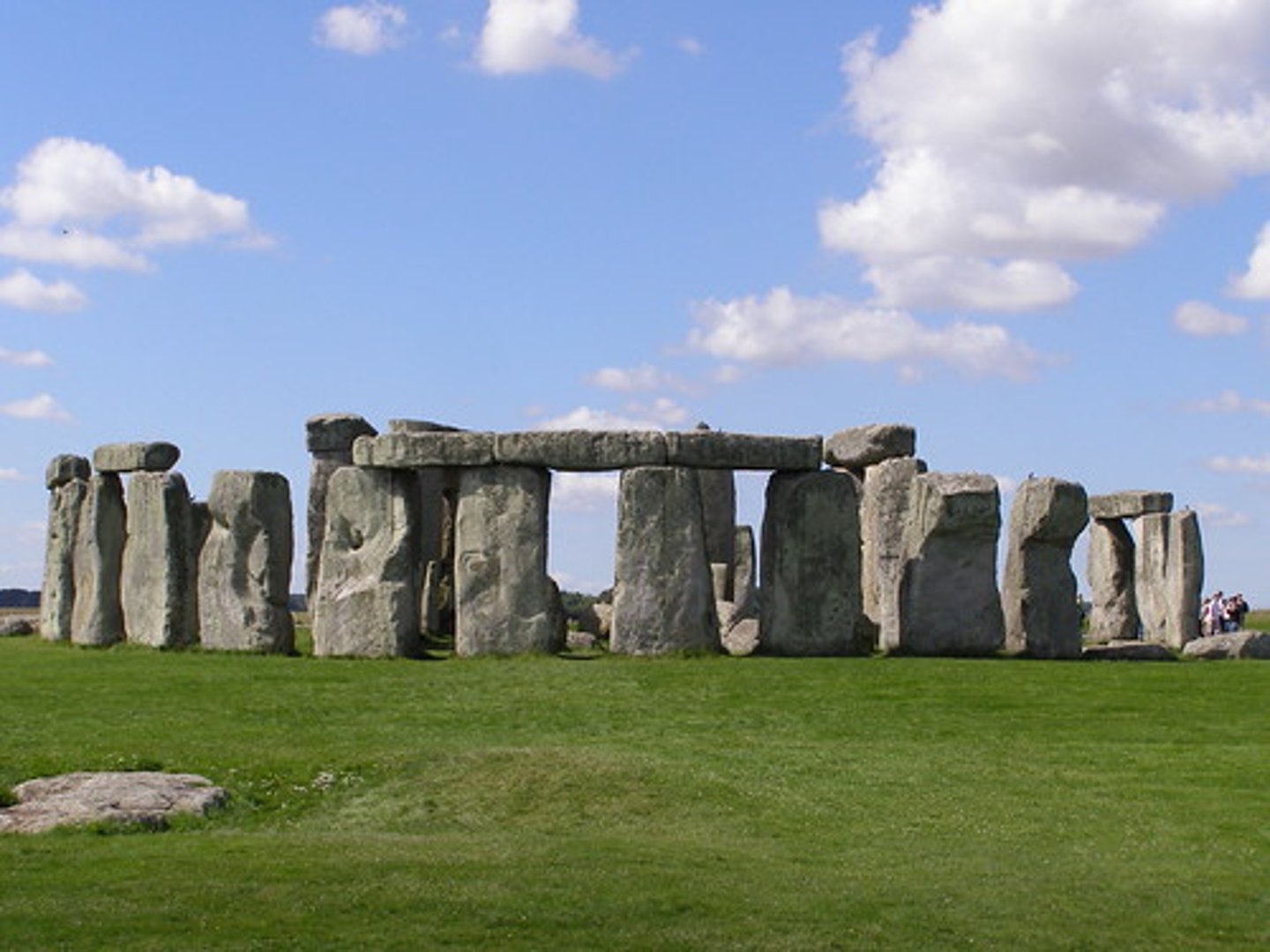Global Prehistory
1/31
There's no tags or description
Looks like no tags are added yet.
Name | Mastery | Learn | Test | Matching | Spaced |
|---|
No study sessions yet.
32 Terms
Paleolithic
Old Stone Age, people were hunter-gatherers, use of worked stone tools
Neolithic
New Stone Age, people cultivated the earth and raised livestock, lived in organized settlements, divided labor into occupations, constructed the first homes.
Apollo 11 Stones
c. 25,000 BCE in Africa, found in a cave, stones with charcoal drawings of animals, some of world's oldest works of art, animals depicted in profile, made by groups of hunter-gatherers, Paleolithic.
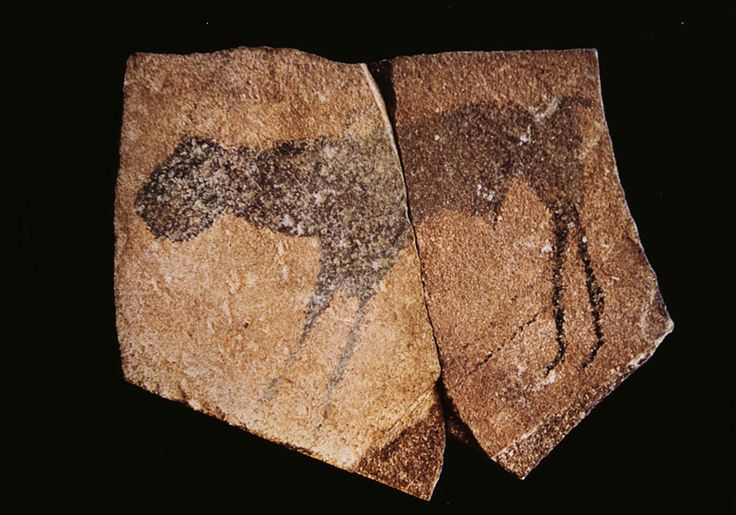
Apollo 11 Stones (image)
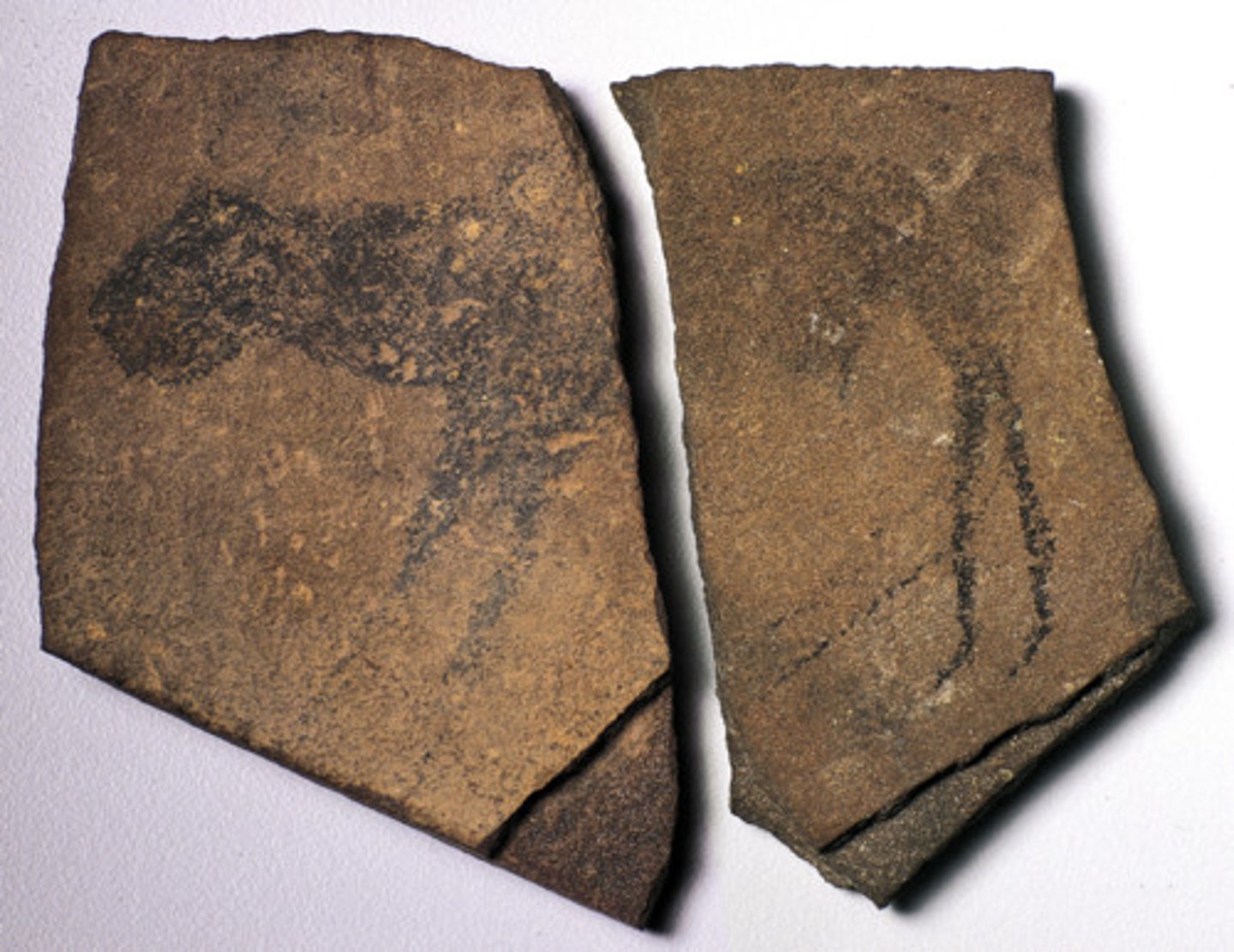
Running Horned Woman
Large rock painting from Africa, c. 6,000-4,000 B.C.E
Pigment on Rock. Located in the middle of the Sahara Desert now, but it was a verdant savannah when this was painted! Figure depicted in a composite pose or twisted perspective. Diagonal lines give a sense of movement. Probably associated with ritual - raffia grass ornamentation, scarification/tattoos, headdress.
Running Horned Woman (image)
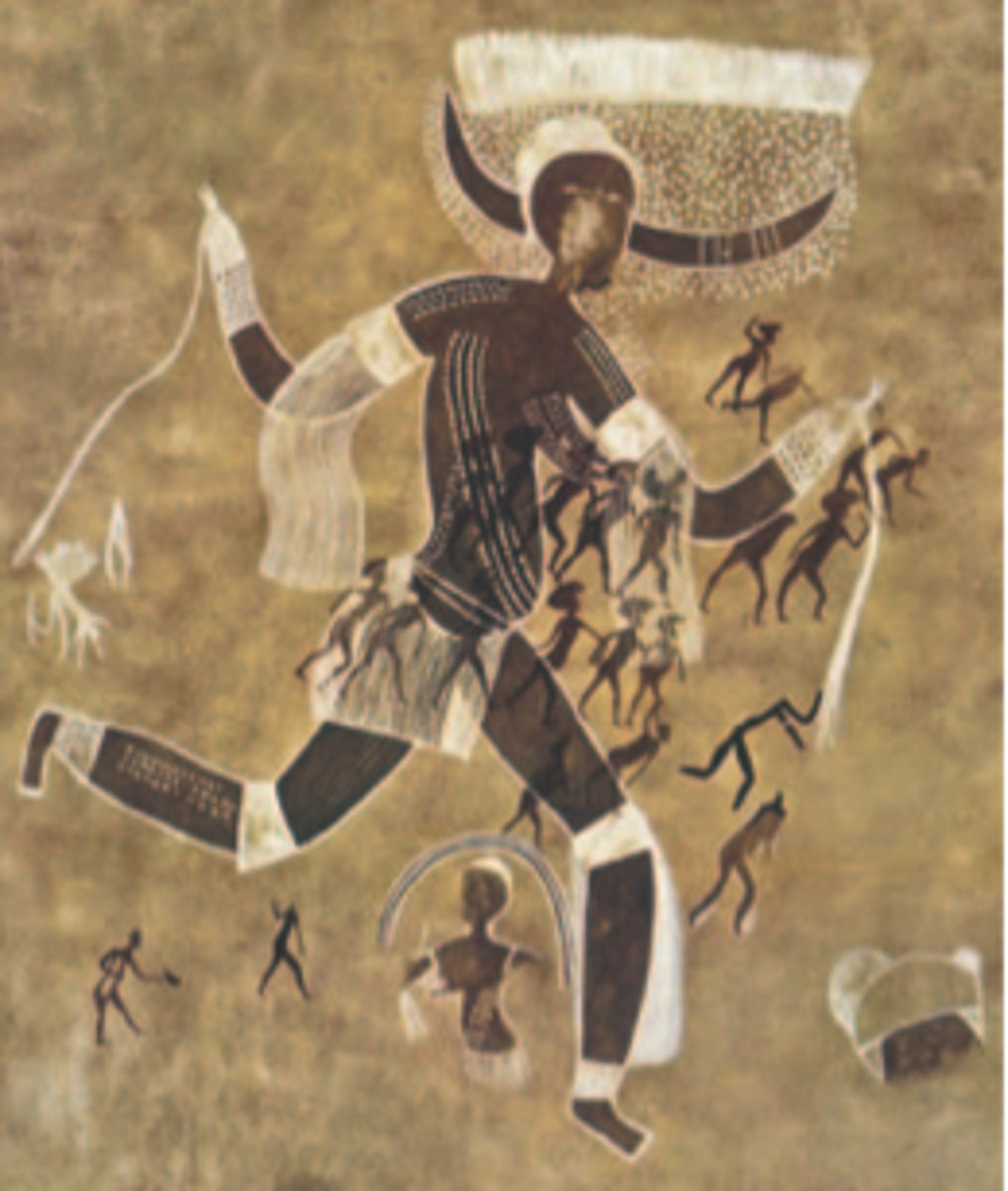
composite view/twisted perspective
A convention of representation in which part of a figure is shown in profile and another part of the same figure is shown frontally
Beaker with Ibex Motifs
Iran. 4200-3500 B.C.E. Painted terra cotta. Funerary object (found in a burial), typical of the first agricultural communities of this area. Zoomorphic forms that may represent both domesticated and wild animals important to people of iran
Beaker with Ibex Motifs (image)

stylized
art that represents objects in an exaggerated way to emphasize certain aspects of the object, not naturalistic.
naturalistic
derived from real life or nature, or imitating it very closely
zoomorphic
animal-shaped; having the form of an animal
anthropomorphic
having human characteristics
ceramic
fire-hardened clay, often painted, and normally sealed with shiny protective coating
Anthropomorphic Stele
A sandstone stele, 3ft tall. A human-shaped figure wearing belted robe with knife hanging from it. found on trade routes in the Arabian Peninsula, Saudi Arabia. 3,000 BCE (fourth millennium). Reflects or is related to trade across the Arabian Peninsula. Likely a grave marker.
incise
cut into; carve; engrave
Anthropomorphic Stele (image)

Jade Cong
Liangzhu, China. 3300-2200 B.C.E. Carved jade. One of many of this type found in burials, this was a jade piece with decorative carvings, unique shape, and symbolic purpose. The stone might have held spiritual or symbolic meanings to the early cultures of China. Jade was worked with sand, extremely difficult and time-consuming to make (therefore making it all the more valuable). Tube with square cross-section and round hole may symbolize Earth and Heaven (linking the natural and supernatural worlds). Possibly has stylized faces on the corners.
Jade Cong (image)
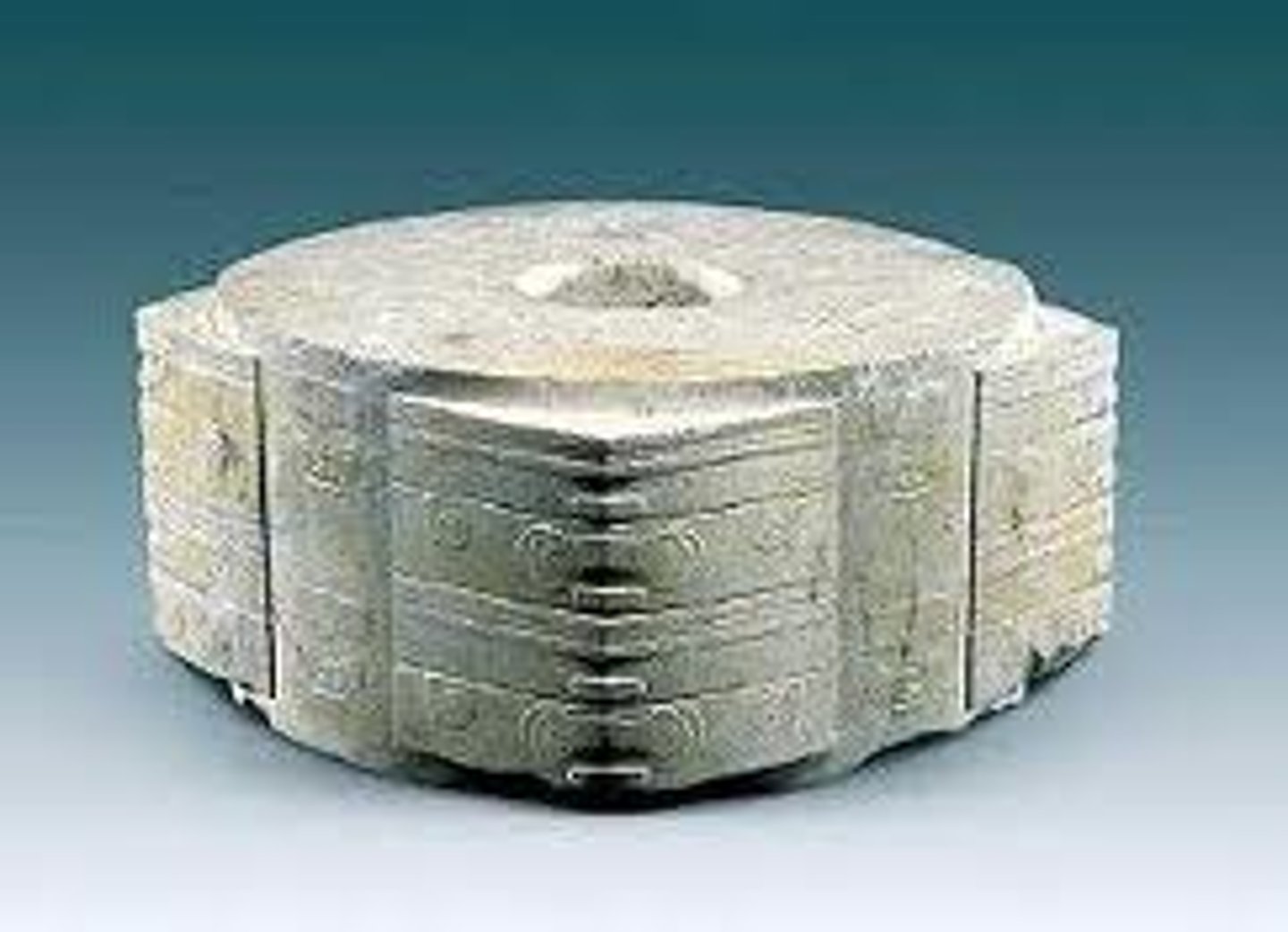
The Ambum Stone
Papua New Guinea. c. 1500 B.C.E. Greywacke (stone). This is a sculpture of some sort of anteater-like creature (spiny echidna?) made from a very rounded stone. With intense use of subtractive sculpting, this piece achieves a freestanding neck and head while still maintaining much of the original shape of the stone. It still uses natural materials and depicts a natural animal. Possibly a totem figure, possibly a pestle (for grinding).
Ambum Stone (image)
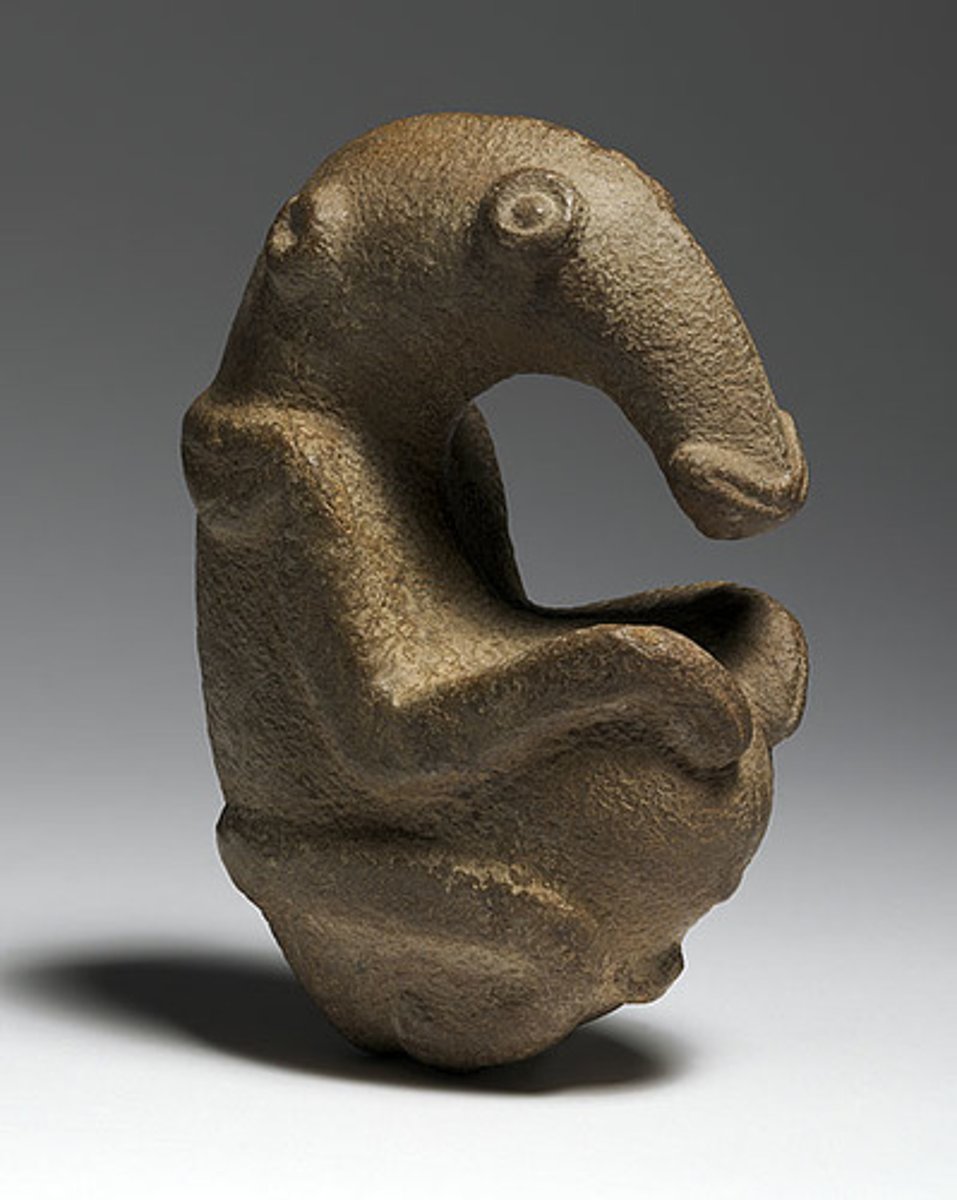
Terracotta Fragment (Lapita)
c. 1000 BCE from the Solomon Islands. Lots of pottery found in burials from this culture - decorated with geometric and anthropomorphic forms. Decoration may have been similar to tattoos common to the region (think: Maui from Moana!). Often included in burial. This fragment has red slip on it that was created by mixing red clay with water and painting it on before firing.
Terracotta Fragment (Lapita) (image)
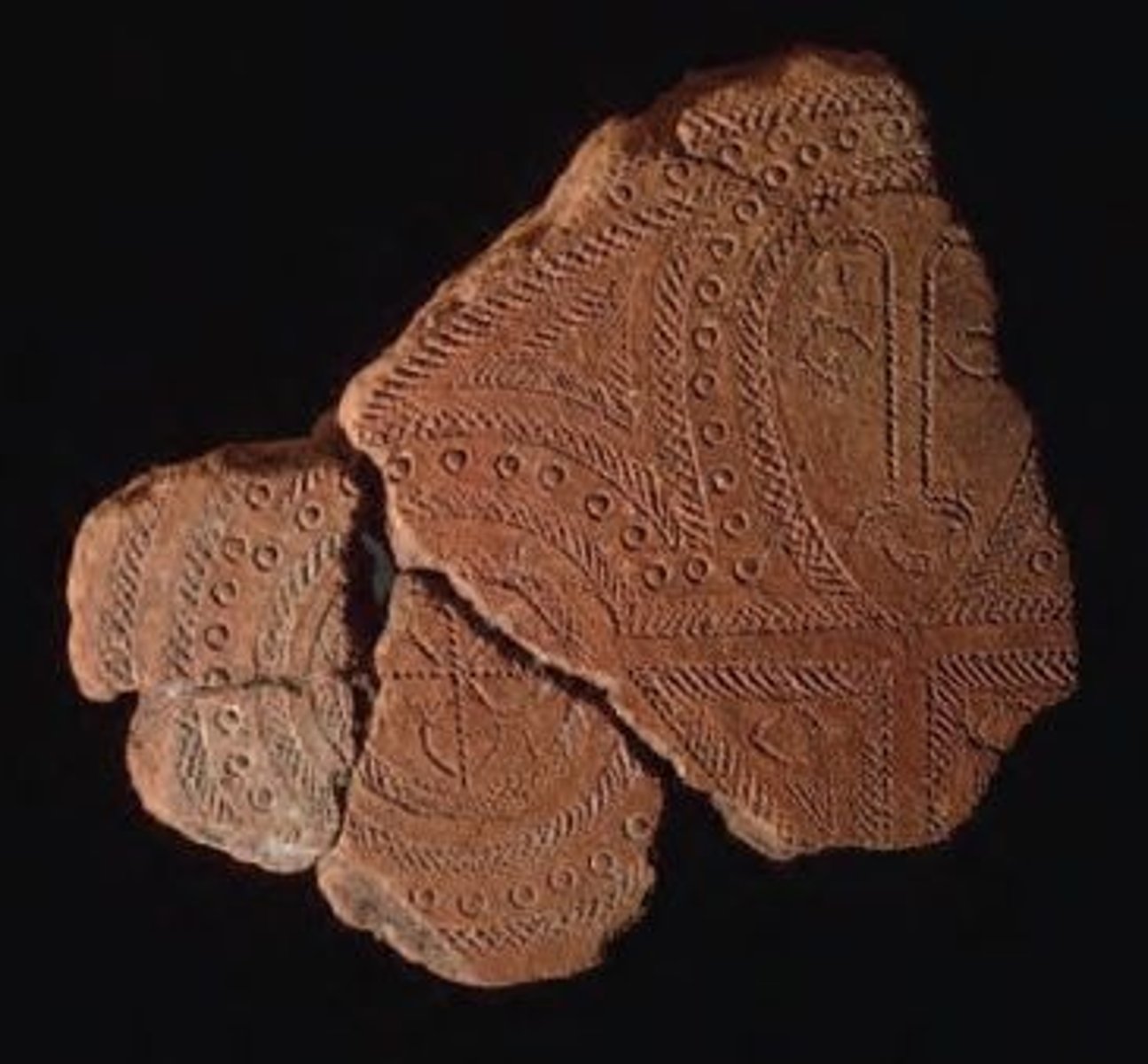
Camelid Sacrum in the Shape of a Canine (image)

Camelid sacrum in the shape of a canine
Tequixquiac, central Mexico. 14,000-7000 B.C.E. Bone. The shape was created by using subtractive techniques and utilizing already apparent features in the bone, like the holes for eyes. Made from the tail bone of a now-extinct American relative of the camel. Many cultures believed this bone was involved in reproduction, so the function of this work could be related to fertility. Also, some cultures believed it was a sort of resurrection stone because it is very dense and survives longer than most other bones in the body. Made using a subtractive method.
Subtractive
Processes that remove material to change the size, shape, or surface of a part.
Tlatilco female figurine
Central Mexico, site of Tlatilco. 1200-900 B.C.E. Ceramic. 9.5 cm high. No interest in the hands or feet (very little attention paid there by the sculptor). Made entirely by hand, no molds. Worked with the hands, but then incised designs added with a sharp tool. Wide hips, large spherical upper thighs, pinched waist (may have had to do with fertility). Lots of care and detail in the hairstyle. Stylized. Additive sculpture. Part of a burial, may have been a grave offering. Bicephalic (two-headed) which could indicate a meaning of duality of some sort.
Hall of the Bulls, Lascaux Cave
Paleolithic Europe, France. c. 15,000 BCE. Depicts animals, black outlines emphasize contours, individual paintings seemingly have no relationship to one another, images are two dimensional, in profile, and seem to float in space with no background or surroundings. Fairly naturalistic.
Hall of the Bulls, Lascaux Cave (image)
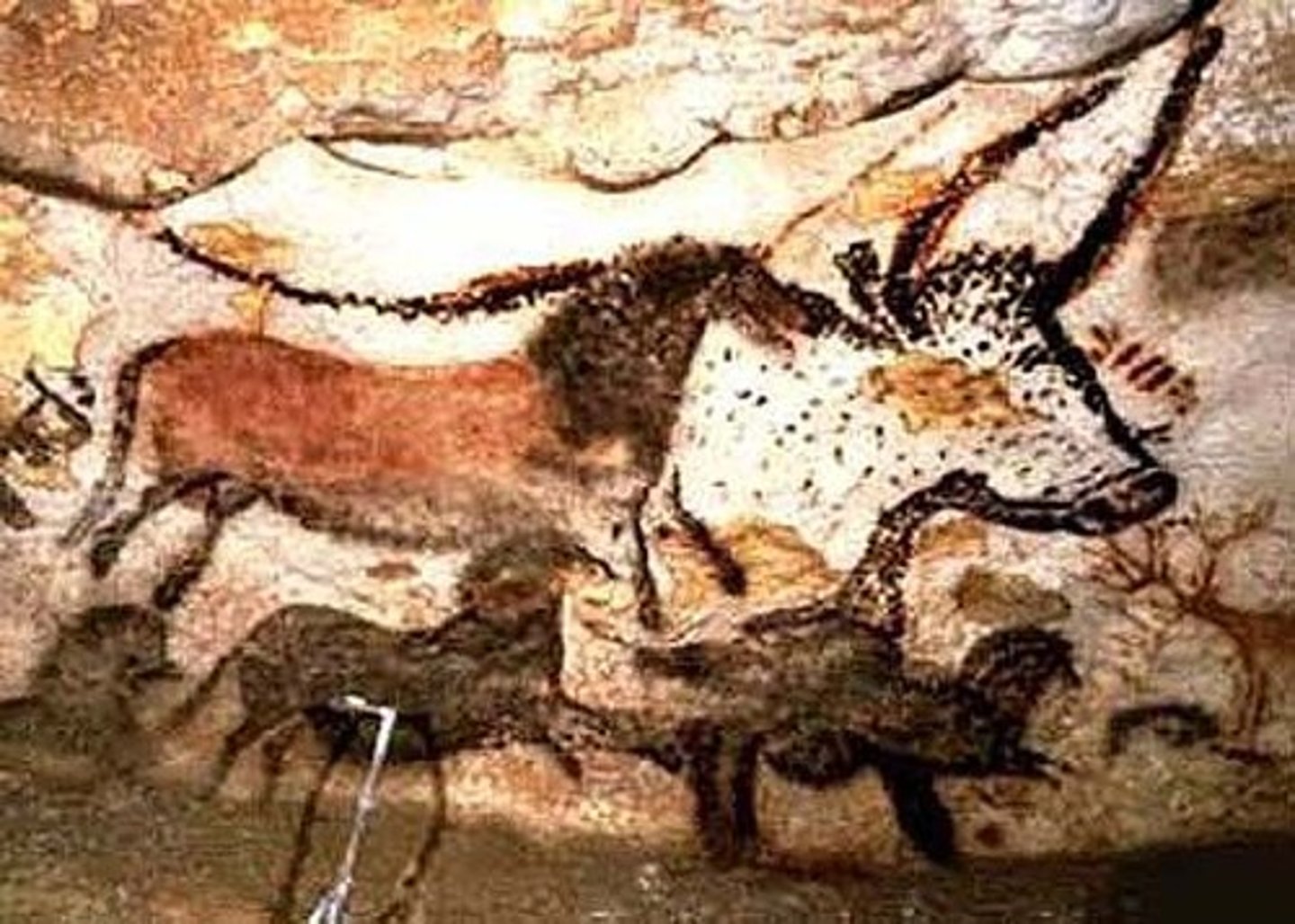
Stonehenge
Wiltshire, U.K., Salisbury Plain, Neolithic Europe. c. 2500-1600 B.C.E. Sandstone. Stonehenge is a famous site know for its large circles of massive stones as well as the mystery surrounding how and why it was built. The stones are believed to be from local quarries and farther off mountains. There is also evidence of mud, wood, and ropes assisting in the construction of the site. Made out of megaliths. May have been some sort of calendar because of its alignment with the sun during the summer and winter solstices. Also could have been some sort of Neolithic gathering site or place people went for healing. Blue stones were the stones quarried far away, believed to have special powers possibly - brought from 150 miles away!
mortise and tenon
a groove cut into stone or wood that is shaped to receive a projection, of the same dimensions
Stonehenge (image)
